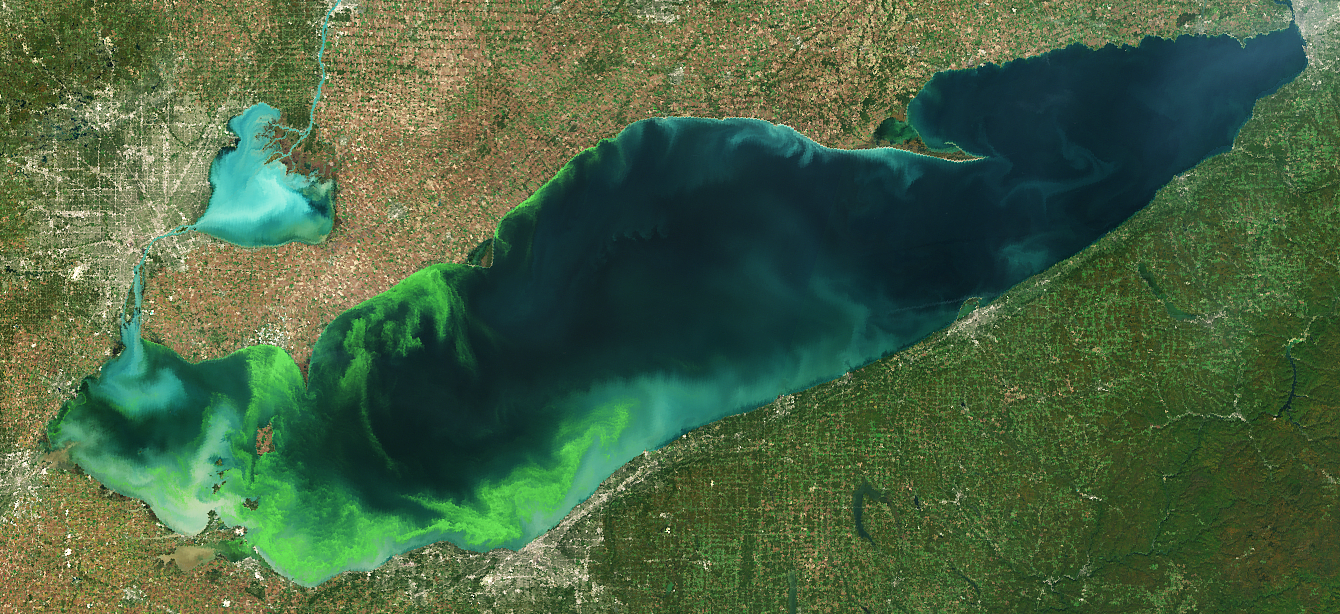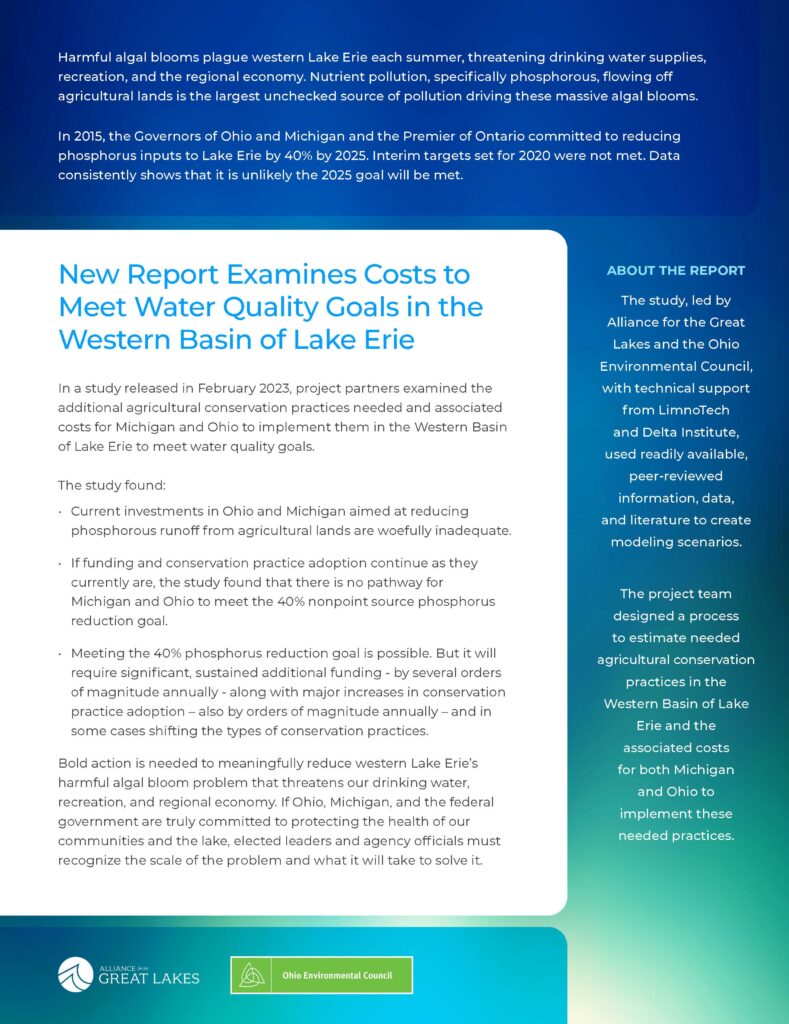Blog
Tagged In: Agriculture, Clean Water, harmful algal bloom, Lake Erie, toxic algae, Water Pollution
The Cost to Meet Water Quality Goals in the Western Basin of Lake Erie
Ohio Environmental Council, February 14, 2023

About the Study
Harmful algal blooms plague western Lake Erie each summer, threatening drinking water supplies, recreation, and the regional economy. Nutrient pollution, specifically phosphorous, flowing off agricultural lands is the largest unchecked source of pollution driving these massive algal blooms.
In 2015, the Governors of Ohio and Michigan and the Premier of Ontario committed to reducing phosphorus inputs to Lake Erie by 40% by 2025. Interim targets set for 2020 were not met. Data consistently shows that it is unlikely the 2025 goal will be met.
This study, The Cost to Meet Water Quality Goals in the Western Basin of Lake Erie, highlights shortcomings in current practices and funding while providing insights into what is needed in Michigan and Ohio to reduce phosphorus inputs to Lake Erie. The study was authored by Alliance for the Great Lakes and the Ohio Environmental Council, with technical support from LimnoTech, Delta Institute, and Michigan Agriculture Advancement.
Bold action is needed to meaningfully reduce western Lake Erie’s harmful algal bloom problem that threatens our drinking water, recreation, and regional economy. If Ohio and Michigan and the federal government are truly committed to protecting the health of our communities and the lake, elected leaders and agency officials must recognize the scale of the problem and what it will take to solve it.
Key Findings:
- Current efforts in Ohio and Michigan aimed at reducing phosphorus runoff from agricultural lands are woefully inadequate.
- If funding and the types of conservation practices and priorities continue as they currently are, the study found that there is no pathway for Michigan and Ohio to meet the 40% nonpoint source phosphorus reduction goal.
- Meeting the 40% phosphorus reduction goal is possible. But it will require significant, sustained additional funding — by several orders of magnitude annually — along with major increases in conservation practice adoption — also by orders of magnitude annually — and in some cases shifting the types of conservation practices.
Recommendations:
- Major shifts needed in types of conservation practices needed:
- The study suggests that annual in-field practices, such as cover crops, no-till, and crop rotation, cannot be scaled sufficiently to meet the water quality goals of the western basin. Funding should be prioritized to practices that make quantifiable, meaningful reductions in phosphorus flowing off agricultural lands.
- In addition to increased funding, changes are needed in the types of conservation practices funded as part of this effort. State and federal agencies must invest sustainably in edge-of-field structural practices like constructed wetlands and two-stage ditches, and conservation easements in order to meet water quality goals in the Western Basin of Lake Erie. These practices deliver more consistent phosphorus reductions year-over-year and are not easily abandoned like annual in-field practices.
- Significant, sustained new investments needed:
- Michigan and Ohio would need to both increase adoption of conservation practices and increase spending on those practices by $40-65 million and $170-250 million annually, respectively, to meet water quality objectives in the Western Basin of Lake Erie.
- The H2Ohio program, initiated by Governor DeWine in 2019, has significantly invested in solutions to phosphorus nutrient pollution. H2Ohio dollars have gone toward wetland construction and incentivizing in-field practices. But to truly implement these practices at the scale needed to make meaningful phosphorus reductions, programs like H2Ohio will need to be funded at much higher levels and over the long-term (beyond the biennial budget cycle).
Report & Fact Sheet:
Community members can use this information to hold elected officials in Ohio, Michigan, and the federal government accountable to recognizing the scale of the problem and what it will take to solve it. Download the report and fact sheet below:


